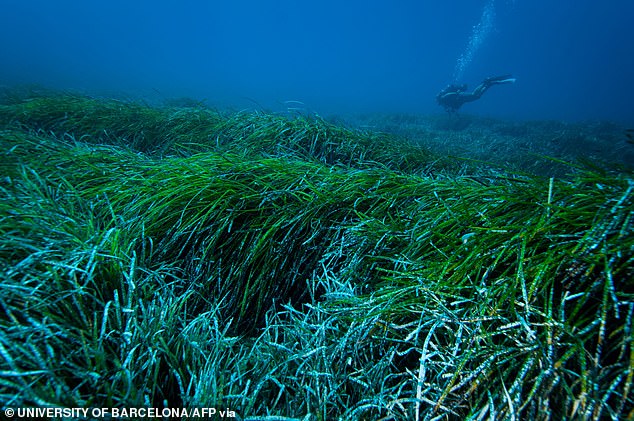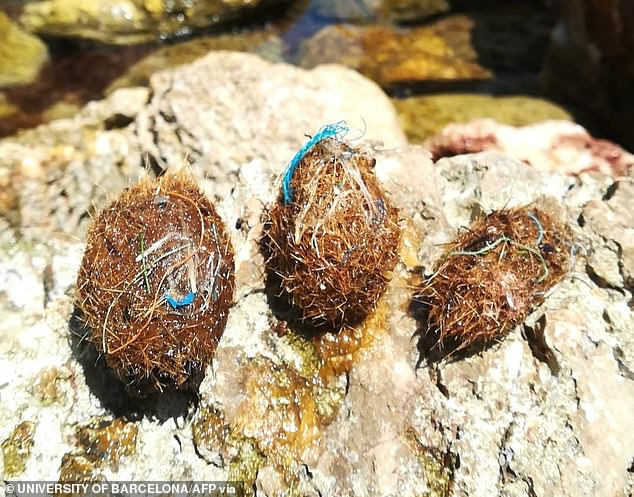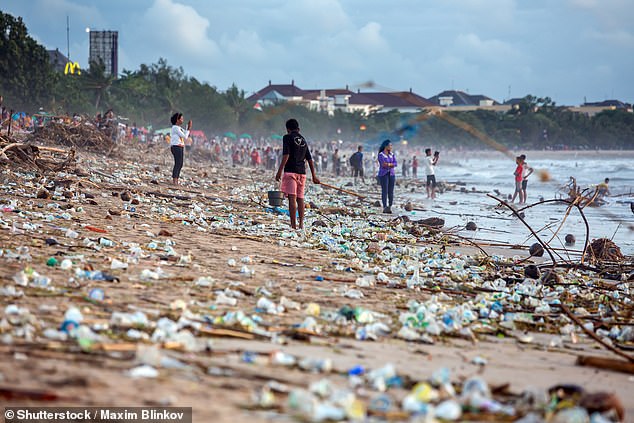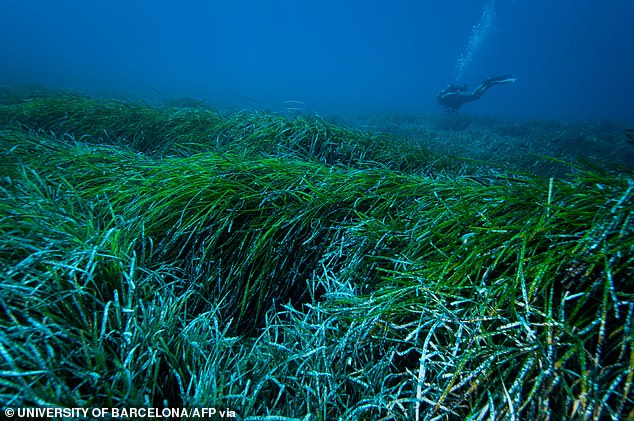Seagrass 'Neptune balls' may be key to clearing oceans of plastic
Every year, an estimated eight million tons of plastic is dumped into our oceans, threatening the lives of fish, seabirds and marine mammals.
Now, a new study suggests that the key to clearing our oceans of plastic may lie in seagrass.
Seagrass forms so-called ‘Neptune balls’ – oval orbs made from the base of leaves that have been shredded and intertwine into a ball.
These Neptune balls collect plastic as they form, before carrying the rubbish to shore.
The new study estimates that Neptune balls sieve over 867 million pieces of plastic from the oceans every year.
The team hopes the findings will encourage environmental agencies to take urgent action to ensure conservation of seagrass meadows.

A new study suggests that the key to clearing our oceans of plastic may lie with seagrass
An analysis of loose leaves from four Spanish beaches found plastic pellets, cosmetic microbeads and polyester fibres from clothes entangled in half of them.
They get mistaken for food by creatures that live in the water – with some ending up on our dinner plates.
Study lead author Professor Anna Sanchez-Vidal, of the University of Barcelona in Spain, said: ‘Seagrass meadows may help counteract marine plastic pollution.’
Global losses of the plant – due to development, pollution and invasive species – are estimated at seven per cent a year since 1990.
The study between 2018 and 2019 was carried out around Mallorca where there are extensive meadows and high levels of plastic near the shore.
There was plastic debris among 50 percent of the 42 samples and intertwined in 17 percent of 198 fibres, known as Neptune balls.
Up to 613 and 1,470 items per kilogram were in loose leaves and Neptune balls, respectively.
They come from everyday household products including packaging, bottle caps and tableware.
Combining the data with estimates of seagrass production in the Mediterranean suggested meadows capture up to 867 million pieces a year in Neptune balls alone.

Seagrass forms ‘Neptune balls’ that trap, extract and carry hundreds of millions of plastic particles to shore every year
Prof Sanchez-Vidal said: ‘There is strong evidence the seafloor constitutes a final sink for plastics from land sources.
‘There is also evidence that part of the plastics lying on the shallow seafloor are washed up back to the shoreline.
‘However, little is known on the natural trapping processes leading to such landwards return.
‘Our findings show seagrass meadows promote plastic debris trapping and aggregation with natural fibres, which are then ejected and escape the coastal ocean.

The findings offer hope of protecting some of the world’s most popular tourism spots. Keeping coasts pristine is critical to many economies
‘Seagrasses, one of the key ecosystems on Earth in terms of provision of goods and services, also counteract marine plastic pollution.
‘In view of our findings, the regression of seagrass meadows in some marine regions acquires a new dimension each year.’
The study, published in the journal Scientific Reports, follows research showing seagrasses are good for beaches.
They were found to hold sand and sediment in place around the Caribbean Sea and Mexico.
It offers hope of protecting some of the world’s most popular tourism spots. Keeping coasts pristine is critical to many economies.
Prof Sanchez-Vidal said: ‘Seagrass meadows are widespread in shallow coastal waters.
‘They provide important ecosystem services and benefits, such as water quality improvement, CO2
absorption, climate change mitigation, sediment production for seafloor and beach stabilisation, coastal protection, nursery and refuge areas for many species and support in fisheries production.’
Seagrass areas in the Mediterranean Sea have decreased by 13 to 50 per cent since 1960.
Prof Sanchez-Vidal added: ‘What is clear is the deterioration of seagrass meadows may compromise the services they provide, so it is crucial to undertake specific actions to mitigate threats causing regression and ensure conservation.’


